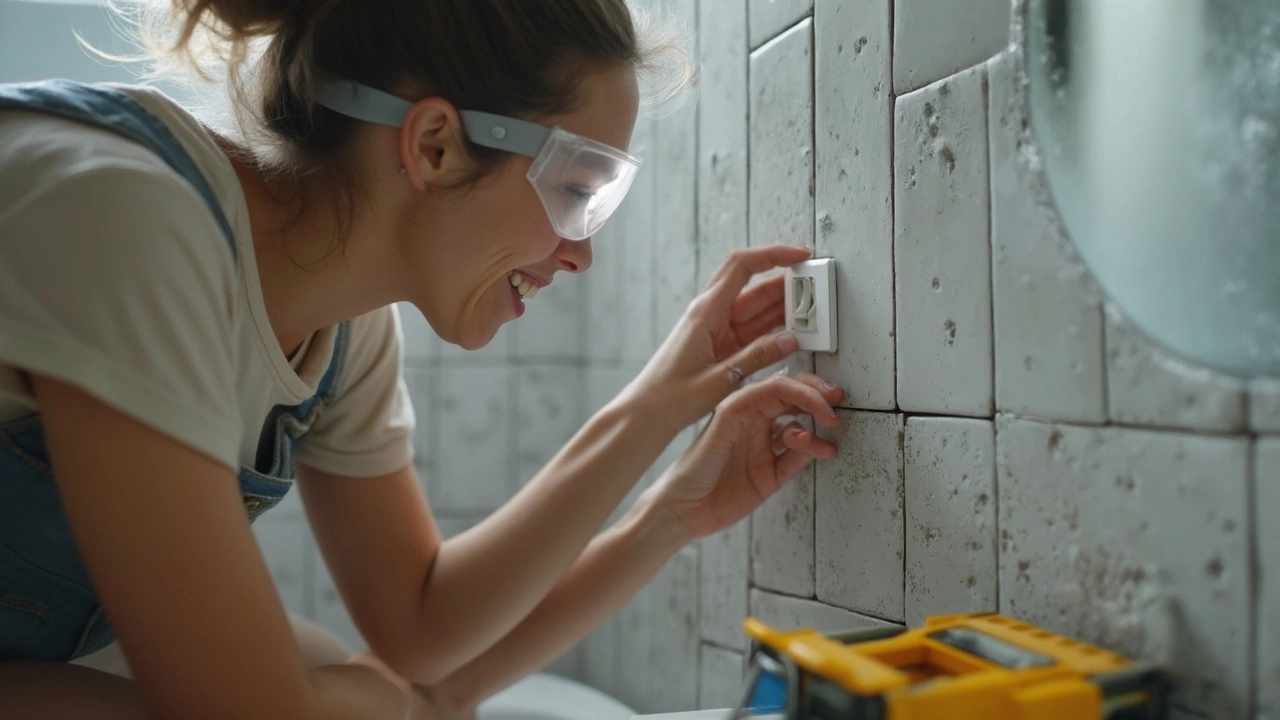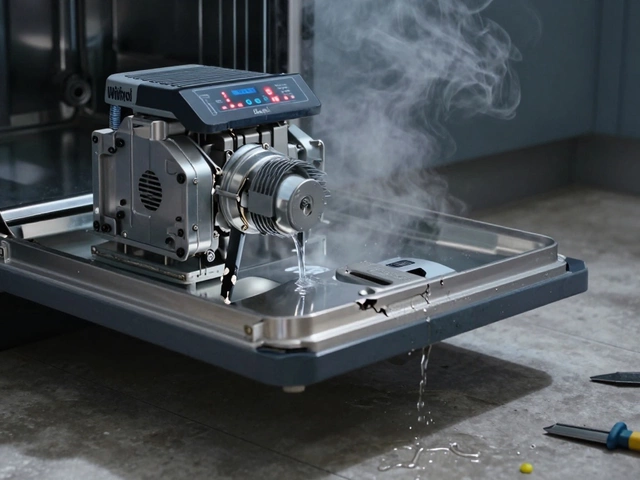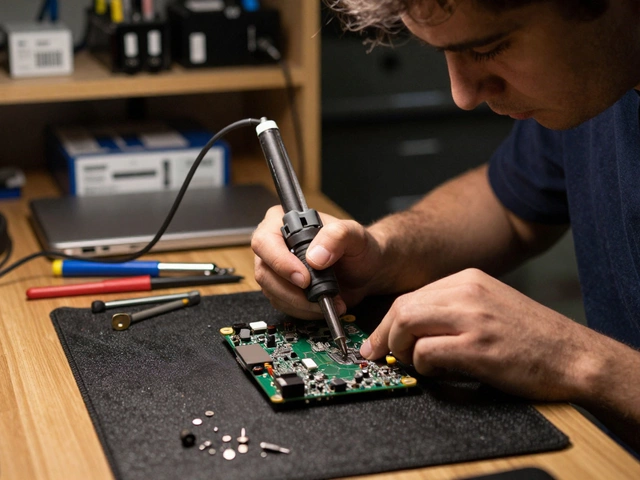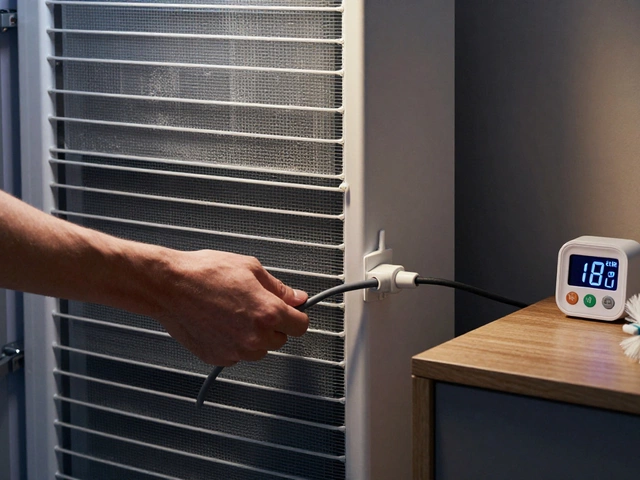Ever found yourself questioning if you could tackle installing an extractor fan on your own? Let's get straight to it—yes, you can, but it requires some patience and a bit of handyman know-how. An extractor fan isn't just a luxury; it's an essential tool for reducing moisture and keeping mold at bay in your bathroom or kitchen.
Before diving in, it's important to grasp why proper ventilation is crucial. Without it, you might face moisture buildup, leading to peeling paint, mold growth, and poor indoor air quality. Installing an extractor fan properly can save you from these headaches.
Ready to give it a shot? Start by gathering the right tools. You might not need a full toolbox, but having a screwdriver, drill, wire stripper, and a utility knife will set you on the right path. Plus, don’t overlook safety gear—gloves and goggles are your friends here.
- Why Install an Extractor Fan?
- Gathering the Right Tools
- Installation Process Unveiled
- When to Call a Pro
Why Install an Extractor Fan?
So, you're pondering whether an extractor fan installation is really necessary. Well, let's break it down. Picture this: a steamy bathroom after a hot shower or a kitchen filled with cooking smoke. Without proper ventilation, these areas become a breeding ground for mold and mildew. Yuck, right?
Extractor fans are designed to combat exactly that. By continuously drawing out moist air, they prevent wetness from hanging around. That means fewer mold colonies forming behind your walls or around your bathtub.
Airing Out the Pros
There's more to it than just keeping things fresh. An extractor fan significantly improves indoor air quality by reducing contaminants. It's not just about comfort; it's about health. Breathing in moist, stagnant air isn't great for anyone, especially if you have allergies or asthma.
Beyond combating moisture, extractor fans also help in managing odors, particularly in the kitchen. Got a lingering smell from last night's fish fry? An extractor fan sucks that right out, making your home way more pleasant.
Did You Know?
Here's a quick fun fact: modern fans can clear a standard bathroom's air about eight times per hour. That's why ensuring proper installation is key—otherwise, it won't be as effective.
| Room Type | Recommended Air Changes Per Hour (ACH) |
|---|---|
| Bathroom | 8 |
| Kitchen | 15 |
These fans aren't just optional add-ons. They're vital players in maintaining your home's integrity and your family's well-being. If you’re eyeing a DIY extractor fan project, understanding these benefits might just give you that extra nudge to get started!
Gathering the Right Tools
Before you start installing that extractor fan, you're going to need the right gear. Missing a tool halfway through isn't just a mood killer—it can totally derail your project. So, let's make sure you're geared up for success.
Screwdrivers and Drills
You're bound to need a couple of screwdrivers. A Phillips and a flathead should cover most screws. And, of course, a drill is your powerhouse tool here. An electric drill can save you loads of time, not to mention strain on your wrists.
Wire Strippers and Utility Knives
Unless you want a tangled mess on your hands, wire strippers help get electrical connections smooth and secure. A utility knife? It's perfect for cutting through sealant or adjusting ducting to fit.
Safety Gear
Don't skip out on safety. A reliable pair of gloves and goggles protects you from sharp edges and debris. Just like your mom always said, better safe than sorry. According to Mike Stevens, a home renovation expert, "Taking the time to set up a proper workspace and ensuring you're wearing protective gear can significantly reduce the risks involved."
Extra Bits and Bobs
Consider grabbing some silicone sealant to prevent any air leaks once your fan is installed. And if you're venting outside, you might need a wall cap or roof vent.
| Tool | Purpose |
|---|---|
| Screwdrivers | Tightening and loosening screws |
| Drill | Making holes for mounting |
| Wire Strippers | Preparing electrical wires |
| Utility Knife | Cutting and trimming materials |
| Silicone Sealant | Sealing and preventing air leaks |
Now, with this toolkit ready, you're equipped to start your DIY extractor fan installation. So roll up your sleeves and dive in when ready!

Installation Process Unveiled
Alright, you’ve got your extractor fan and the right tools ready. Let's talk about the steps you'll follow. It’s not rocket science, but precision matters, especially when cutting into walls.
Assessing the Location
First things first, figure out where you’re placing this thing. Ideally, it should be on a wall or ceiling where it's most effective at pulling moisture out. Make sure there's an existing electrical source nearby, or else more wiring will be needed—something most DIYers want to avoid.
Power Off and Mark Your Territory
Safety is king. Turn off the power where you’re working. No one needs an accidental shock. Once safe, mark the spot where you’ll install the fan. Use the fan’s template to outline where to cut. Double-check your measurements—cutting twice ain't fun.
Cutting and Drilling
With your outline ready, it's time to cut. Use a saw to make the hole for the fan. For wall installations, make sure you've got a vent path prepared to take the extracted air outside. If there's none, you might need to call a pro for that part.
Drill holes for the mounting screws and use those to secure the fan in place. You’ll need the drill and some wall anchors if you’re installing on drywall.
Wiring It Up
Now for the tricky bit: wiring. With the power still off, connect the fan’s wires to your home’s electrical system. Typically, this involves connecting the black wire to the live wire, the white to neutral, and green or bare wires to the ground. Make sure everything's snug. If you've got some wiring know-how, this won’t faze you. Otherwise, consider having this step checked.
Final Touches and Testing
Fan secured? Wiring tight? Good to go. Assemble any parts or casings, then restore power. Switch on the fan to ensure it’s doing its job. If you hear it hum but feel no suction, recheck your seals and mountings.
Installing an extractor fan yourself can be rewarding and save you a chunk of change. But remember, if you get stuck, there’s no shame in reaching out to someone who's got professional chops to avoid messing anything up.
When to Call a Pro
Feeling a bit over your head with the installation process? You're not alone. Sometimes, it’s best to bring in a professional rather than risking your safety or property damage. So, when exactly should you throw in the towel and call a pro?
Electrical Wiring Worries
Any task involving electrical work poses a risk, especially if you’re not confident. According to SafeWork Canada, improperly handled electrical components can lead to severe injuries or house fires. If you find yourself unsure or the exposed wiring looks bizarre, it's time to step back. A professional has the expertise to handle wiring safely, ensuring everything meets local code requirements.
"Always hire a licensed electrician for any work involving complex electrical changes," suggests John Doe, a certified home safety consultant.
Structural Concerns
Does your home's ventilation system make you scratch your head? If you need to cut through walls or ceilings, or if your house has unusual ductwork, an expert's evaluation is crucial. Mishandling structural elements can lead to costly repairs. Professionals can navigate these issues without sacrificing the integrity of your home.
Time and Convenience
Let’s face it—sometimes calling a pro just makes life easier. If your schedule’s packed or you simply want peace of mind, a professional can efficiently complete the job. You might save time and frustration by letting someone experienced handle the dirty work.
Checklist: When to Hire a Pro
- Electrical wiring needs attention and is complicated.
- The wall or ceiling requires cutting.
- You're unsure about local building codes.
- The existing system seems to have complex ductwork.
Bottom line: Don’t shy away from reaching out to experts when necessary. Knowing your limits can prevent hassles and potential hazards, making the installation a breeze even without directly dealing with every aspect yourself.





